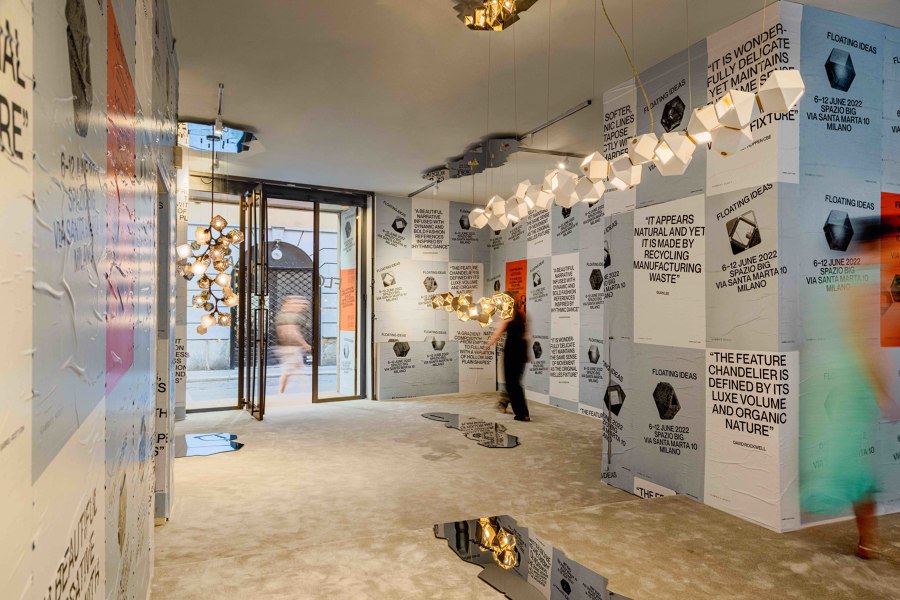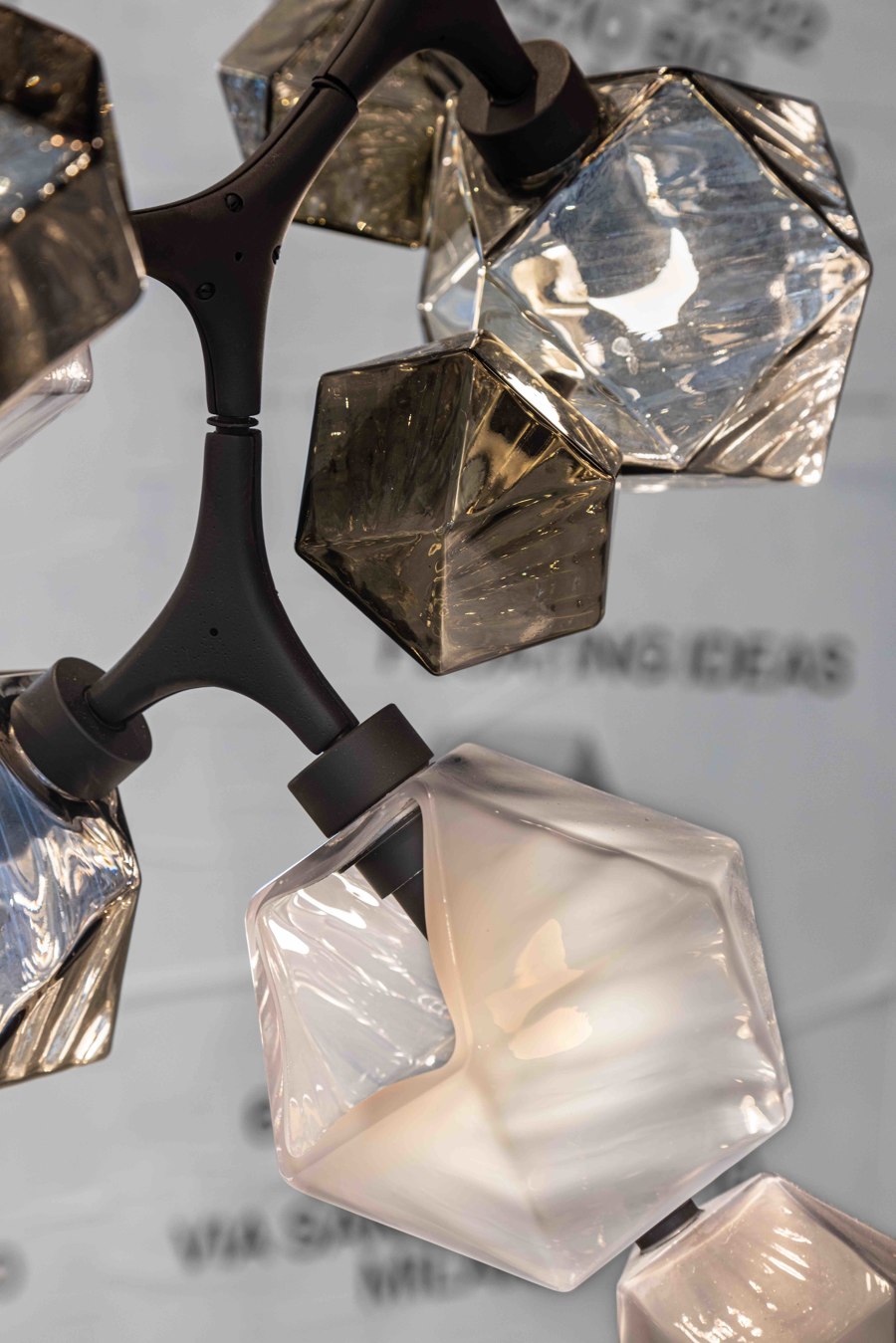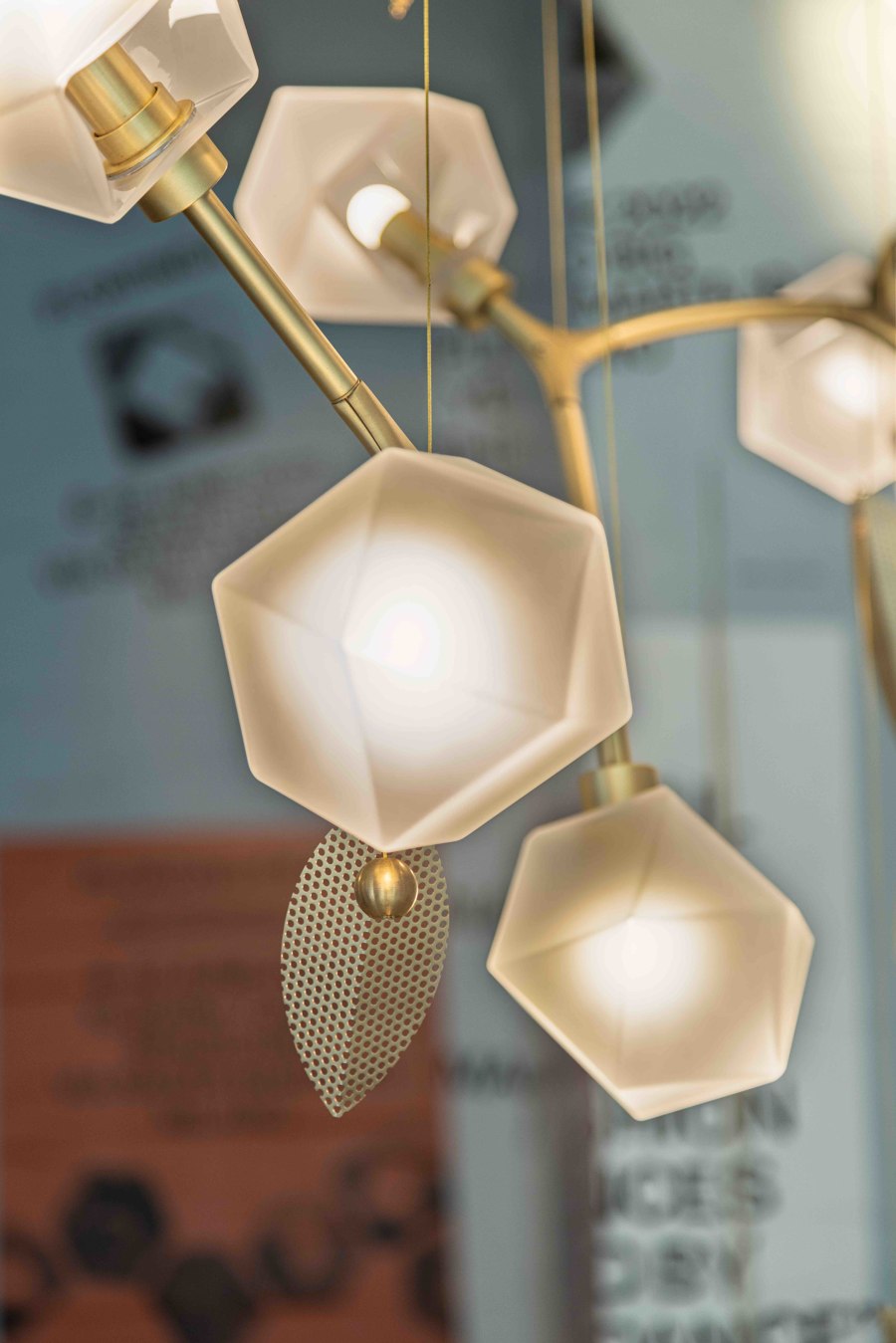Design with a difference for Gabriel Scott
Historia de la marca de Emma Moore
Mayfair, London, Reino Unido
15.06.22
Putting Gabriel Scott's Welles chandelier's infinite potential for customisation to the test, six renowned designers reimagine the arrangement and materials of the iconic polygonal lighting fixture.
Gabriel Scott founder, Scott Richler, set up shop in 2012 with the idea of creating an architect-pleasing furniture collection which would be infinitely customisable. The Welles chandelier is a key piece
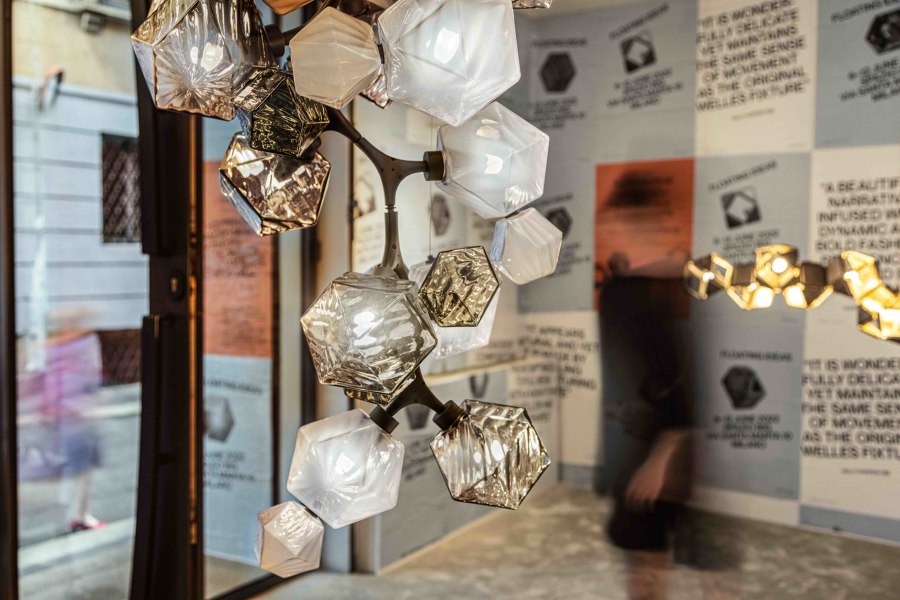
Gabriel Scott founder, Scott Richler, set up shop in 2012 with the idea of creating an architect-pleasing furniture collection which would be infinitely customisable. The Welles chandelier is a key piece
×It’s funny to think that we once believed homogenous interiors across a business’s various outposts communicated a unified vision; whether you walked into a branch in Stockholm or Hong Kong, London or New York, consistent light fittings and countertops were shorthand for ‘You know us, you know what we do, you can trust us’. Now we eye global uniformity with suspicion. ‘Where’s the personality? How is the locale reflected?’ goes today’s internal dialogue. The design community, however, are responding – not just with a made-to-measure approach – but with more strident customisation offers.
During Milan Design Week, Richler presented Floating Ideas, which showcased six adaptations of the Welles Chandelier from six leading designers of product and interiors
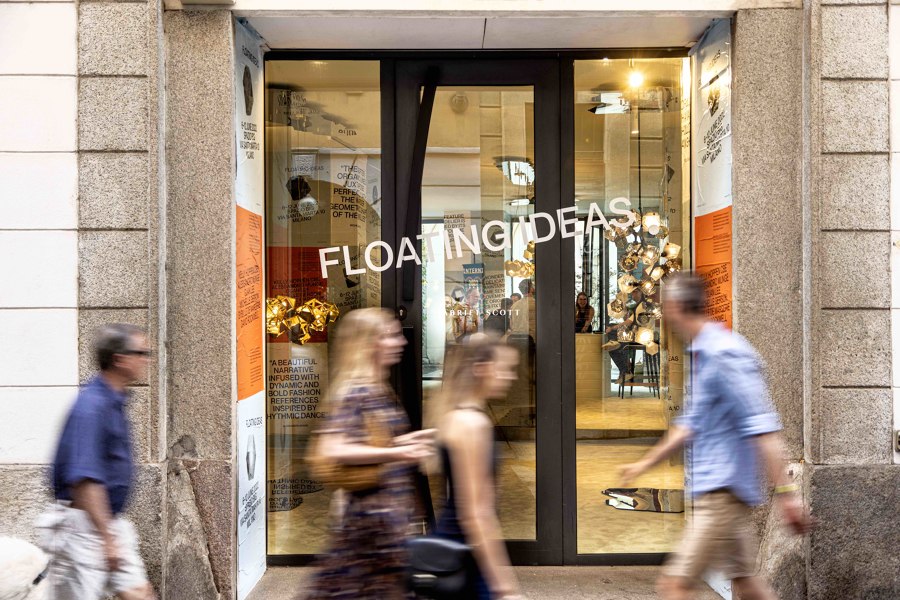
During Milan Design Week, Richler presented Floating Ideas, which showcased six adaptations of the Welles Chandelier from six leading designers of product and interiors
×Servicing our desire for individuality is relatively new for many design businesses, but for people like Scott Richler, it’s his brand’s raison d’être. Gabriel Scott launched in 2012 on a manifesto to furnish the architectural community with exactly what they needed. Richler had the inside line – he had, after all, trained as an architect at Montreal’s McGill University, before segueing into jewellery design and back to designing large scale jewellery for the home to order. Often approached for very specific bespoke work, he decided to combine all his experiences into a brand that was capable of responding to individual requests.
Designs made to adapt
Over ten years he has built a core collection – designed to be adapted. 'Because I came from a bespoke background, my thoughts focused on how to assemble a table so that if somebody wants to change the size of it, it's not going to require a return to the drawing board. The thinking is, how can you retain the bespoke nature of something in a ready-to-wear collection?' Equally customisable, in his book, are materials and configurations. One of his early commissions was a vastly scaled up and stretched out version of the Kelly Chandelier he had shown at ICFF, requested by Thom Forsyth, Creative Director of the Rockwell Group, for the bar at Fairmont Chateau Frontenac in Quebec City.
On show at Floating Ideas was the Welles Reimagined by David Rockwell, Sybille de Margerie and Kelly Hoppen (top) and Alessandro Munge, Michelle Gerson and Dr Guan Lee (below)
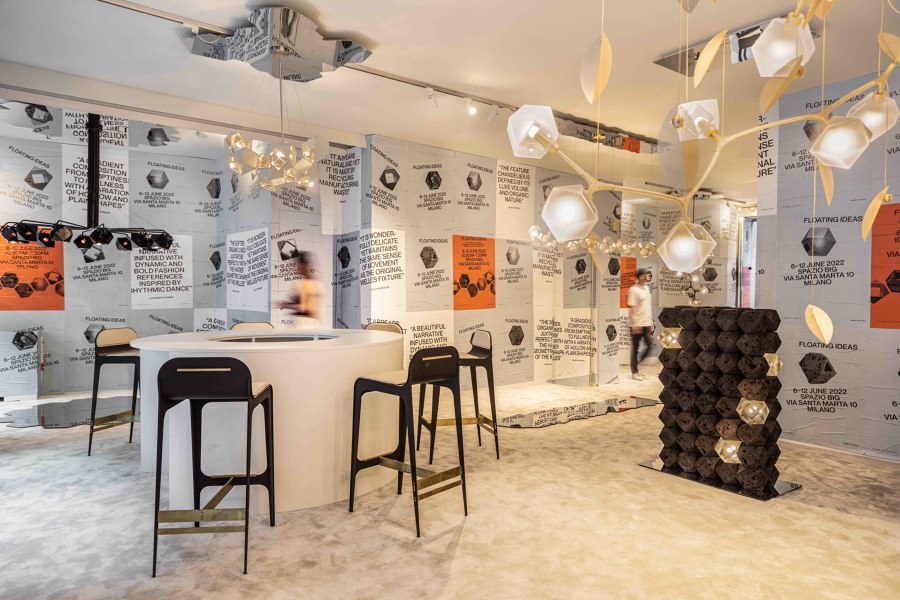
On show at Floating Ideas was the Welles Reimagined by David Rockwell, Sybille de Margerie and Kelly Hoppen (top) and Alessandro Munge, Michelle Gerson and Dr Guan Lee (below)
×Richler lives in London but Gabriel Scott designs are made and customised in a Montreal workshop. While coffee tables and armchairs are very much part of the collection, lighting has become a particular focus. Using the language of fashion to frame architecture, as is his wont, Richler calls lighting the must-have handbags of a collection. At the heart of his portfolio is a signature piece of lighting, the Welles chandelier, composed of glass cuboctahedron pieces. This year Richler is putting the spotlight on sculptural modular design by handing it over to six globally renowned designers and asking them to do their own bit of reimagining – to demonstrate the endless possibilities.
The reimagining of the Welles Chandelier by Dr Guan Lee features the signature cuboctahedrons in PoliRock, a material made by Lee’s team from waste and developed to resemble authentic rock
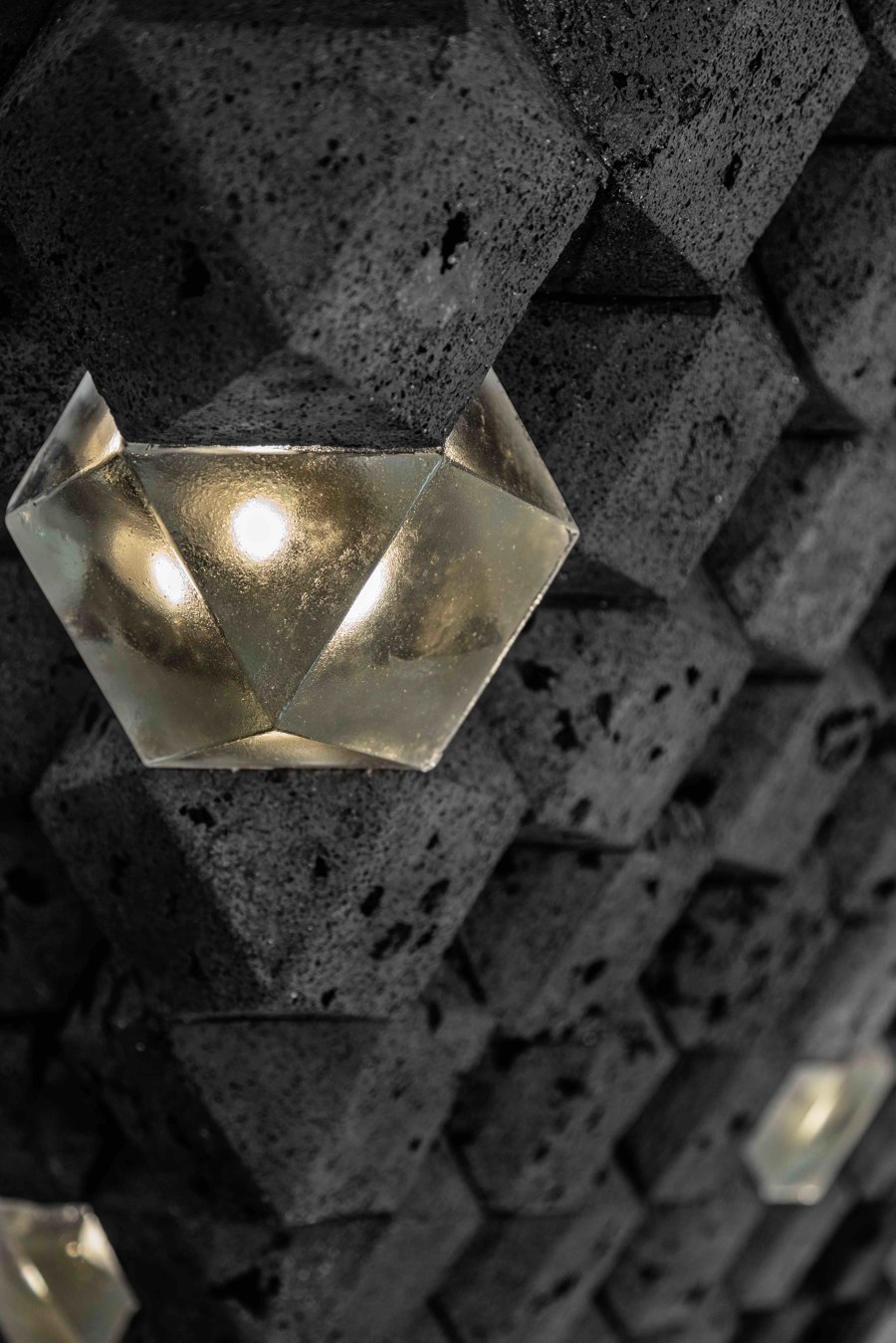
The reimagining of the Welles Chandelier by Dr Guan Lee features the signature cuboctahedrons in PoliRock, a material made by Lee’s team from waste and developed to resemble authentic rock
×Casting new lights
On the roster of designers is the mid-century-leaning New York interior designer Michelle Gerson, who, pushing a post-pandemic rebirth theme, has strung out the Welles’ cuboctahedron modules like May blossom on a branch; Kelly Hoppen, who has created an elegant, linear cluster of the Welles components, cast in white clay and connected with satin brass; David Rockwell, whose studio has developed a floating fixture that resembles a cluster of wet grapes – the cuboctahedrons here are produced in dark and clear glass of varying sizes that coalesce organically; and Parisian interior designer Sybille de Margerie, who has played with light and shadow in her arrangement of the elements, using padded leather on certain facets to cleverly sculpt the assembly.
David Rockwell’s version of the Welles (top) groups the light fixtures in an organic cluster like grapes, while Alessandro Munge’s take (below) shows them dancing at the end of long black limbs
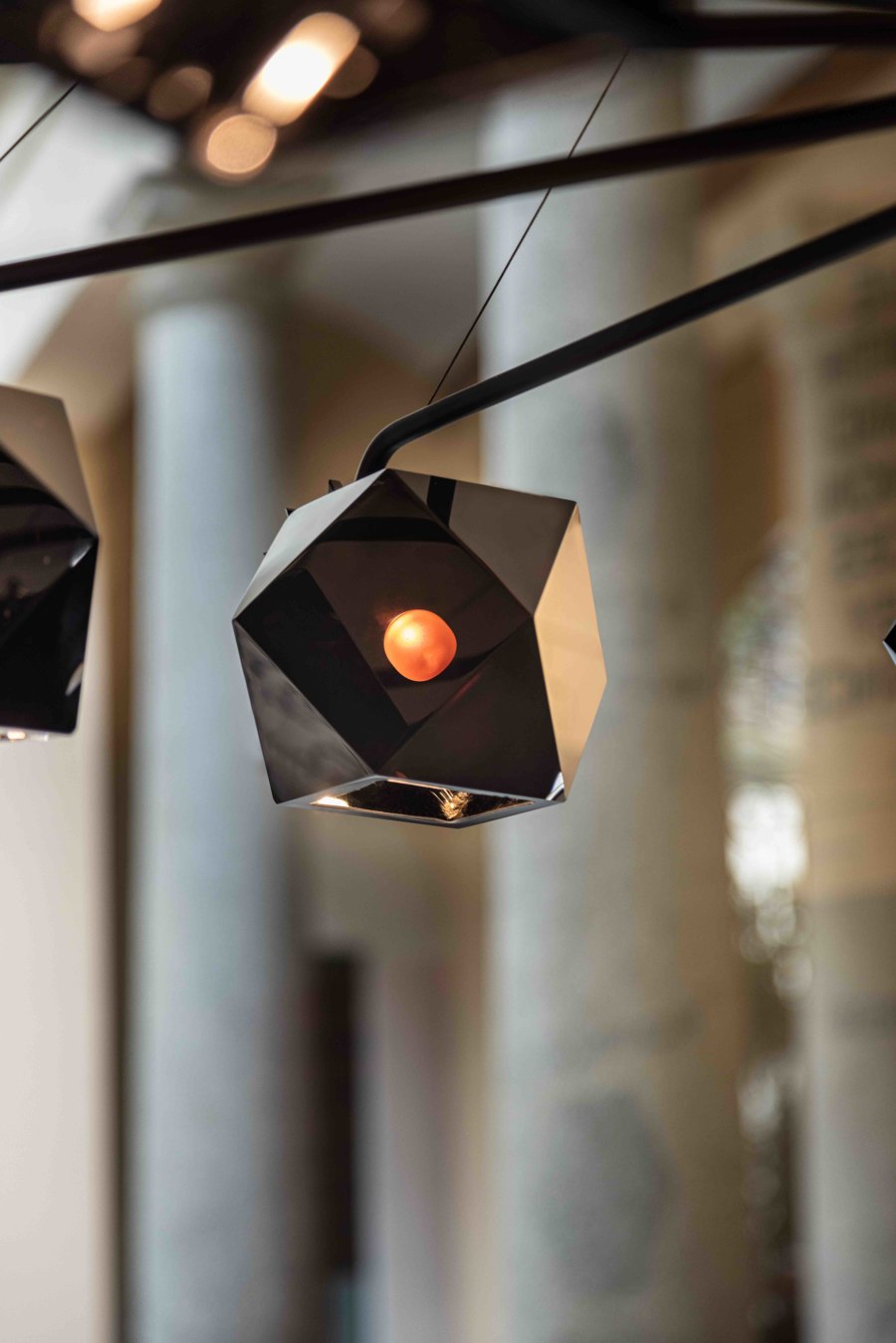
David Rockwell’s version of the Welles (top) groups the light fixtures in an organic cluster like grapes, while Alessandro Munge’s take (below) shows them dancing at the end of long black limbs
×Same but different
The two which have departed most from the original design come from Toronto-based Studio Munge and Guan Lee, director of Grymsdyke Farm and co-director of London UCL’s Material Architecture Lab. Led by Italian designer Alessandro Munge, the Toronto studio has been inspired by rhythmic dance, the dark glass faceted globes holding poses on the end of outstretched black stems. Easily adapted to hold its own in different volumes of space, the piece screams modern Mouille.
Guan Lee’s version, meanwhile, is unsurprisingly all about material; the polygons are transformed in appearance and mood by being moulded in Material Architecture Lab’s new POLiROCK material. Though it looks natural, it is composed of manufacturing waste. It is strong but light and porous, and can be used outside, where it will evolve under nature’s influence.
The reimagining by Michelle Gerson (top) has the delicate appearance of blossoms on a branch, while Sybille de Margerie’s reworking (below) is a clever grouping, sculpted using sections in leather
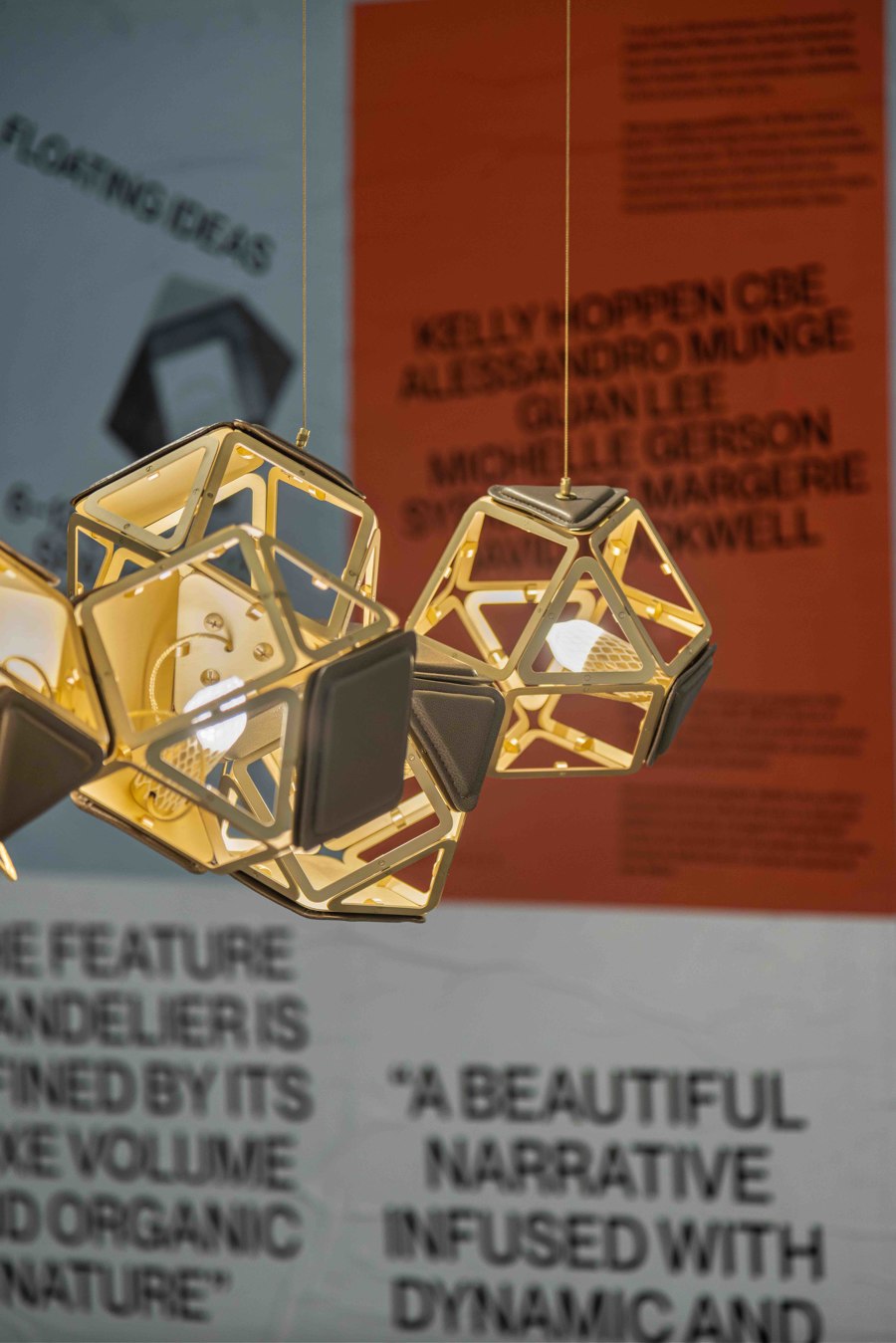
The reimagining by Michelle Gerson (top) has the delicate appearance of blossoms on a branch, while Sybille de Margerie’s reworking (below) is a clever grouping, sculpted using sections in leather
×'The designers are all very different animals,' says Richler, whose only stipulation was that their customisation should itself allow for further adaptations. 'Materially the brief was open, but they had to respect the idea that we would ultimately take what they make and make it in different ways – it had to still do, essentially, what the Welles is designed to do.' Launching recently during Milan Design Week, the new iterations of the Welles chandelier show us just how custom things can get.
© Architonic



